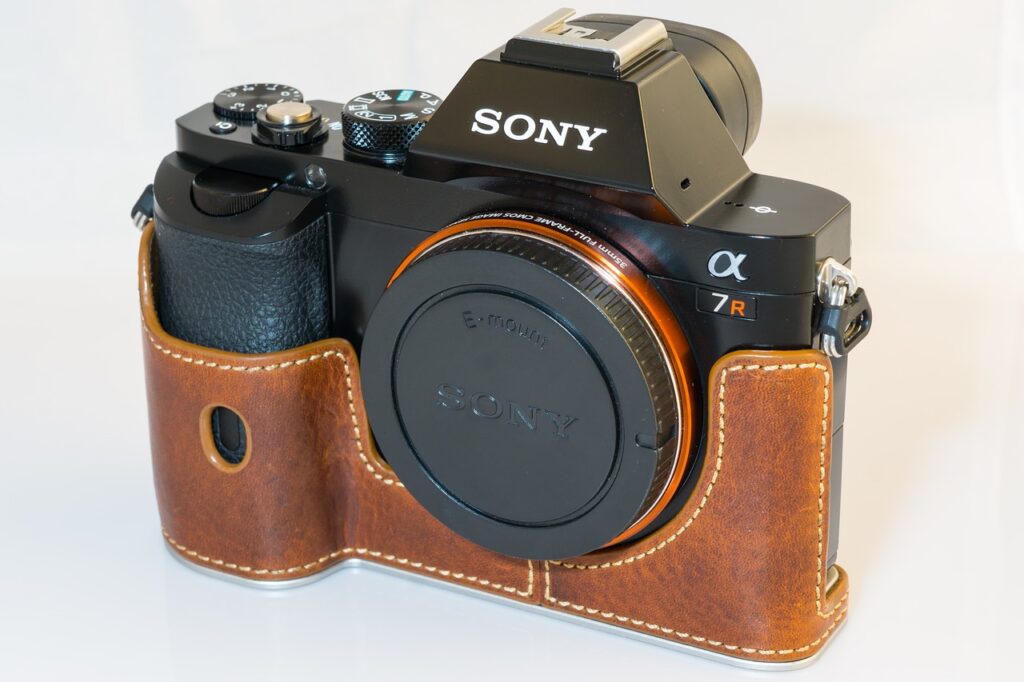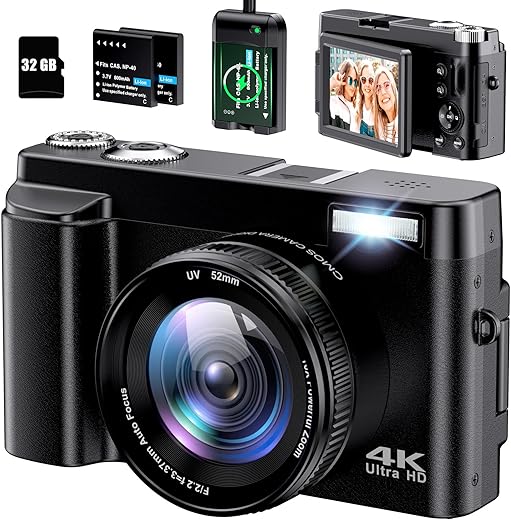As a passionate photographer, I understand the excitement and the daunting task of selecting the perfect high-end mirrorless camera. With so many advanced options available, it can feel overwhelming to navigate through the multitude of features and specifications. In this blog post, I will share my insights on the best high-end mirrorless cameras currently on the market, evaluating their performance, features, and overall value. My goal is to provide you with the information you need to make an informed decision, whether you’re a dedicated enthusiast or a professional seeking to elevate your craft. Let’s explore the world of high-end mirrorless cameras together.
Understanding Mirrorless Technology
The advent of mirrorless technology has fundamentally changed the landscape of photography and videography. By moving away from the traditional mirror design found in Digital Single-Lens Reflex (DSLR) cameras, mirrorless systems have introduced a range of innovative features that cater to modern photographers’ needs. In this section, we’ll break down the key fundamentals of mirrorless camera technology, compare it with DSLRs, and highlight the advantages that mirrorless systems bring to both amateur and professional photographers.
The Basics of Mirrorless Technology
At the core of a mirrorless camera is the absence of a reflex mirror and an optical viewfinder. Instead of utilizing a mirror and prism system to reflect light through the lens onto the viewfinder, mirrorless cameras employ an electronic viewfinder (EVF) or rely on the rear LCD screen for composing shots. When you take a picture with a mirrorless camera, light passes directly through the lens to the image sensor, which captures the scene in real-time.
Differences Between Mirrorless and DSLR Cameras
| Feature | Mirrorless Cameras | DSLR Cameras |
|---|---|---|
| Viewfinder | Electronic Viewfinder (EVF) or LCD | Optical Viewfinder |
| Size and Weight | Generally smaller and lighter | Bulkier due to mirror mechanism |
| Autofocus | Fast Phase Detection & Contrast Detection | Predominantly Phase Detection |
| Battery Life | Typically shorter | Generally longer |
| Lens Availability | Growing selection | Extensive selection available |
Advantages of Mirrorless Systems
Electronic Viewfinders
One of the standout features of mirrorless cameras is the Electronic Viewfinder (EVF). Unlike traditional optical viewfinders, the EVF displays a digital representation of the scene as captured by the image sensor. This means:
- Real-Time Exposure Simulation: You can see how adjustments to settings like ISO or aperture will affect the image in real-time.
- Focus Peaking and Histogram: Many EVFs provide focus peaking and histograms to assist with achieving perfect focus and exposure, giving photographers more control.
For example, cameras like the Sony Alpha 7 III and Fujifilm X-T4 come with high-quality EVFs that give a bright and detailed view, allowing photographers to accurately compose shots.
Autofocus Capabilities
Modern mirrorless systems, like the Canon EOS R5, utilize advanced autofocus technologies, including hybrid systems that combine phase detection and contrast detection. This results in:
- Faster Autofocus: Many mirrorless cameras can achieve focus in as little as 0.02 seconds.
- Eye Tracking and Face Detection: These features have become essential for portrait photographers, ensuring that the subject’s eyes are in sharp focus.
The Nikon Z 6II has gained popularity among wildlife photographers due to its fast and accurate autofocus system, making it an excellent choice for capturing fleeting moments.
Reduced Size and Weight
One of the primary draws of mirrorless cameras is their compact form factor. Without the bulk of a mirror mechanism, manufacturers can design sleeker and lighter bodies. For instance:
- The Olympus OM-D E-M10 Mark III is designed with portability in mind, perfect for travel and street photography.
- This reduced size often makes mirrorless systems more comfortable for long shooting sessions, allowing photographers to carry their gear with ease.
The Evolution of Mirrorless Cameras
The mirrorless technology story began with the introduction of models like the Panasonic Lumix GF1 in 2009, setting the stage for a new category of cameras that offered interchangeable lenses without the bulk. Over the years, advancements in sensor technology, image processing, and autofocus systems have propelled mirrorless cameras into the mainstream.
Growing Acceptance in the Professional Realm
Initially met with skepticism, mirrorless cameras have gained validation among professionals. Many industry leaders have adopted mirrorless systems due to their technical advantages and lightweight design. Notable examples include:
- Canon EOS R3: This camera targets sports and wildlife photographers, showcasing the fast shooting speeds and advanced autofocus capabilities characteristic of mirrorless technology.
- Sony FX9: Widely used in film production, this full-frame mirrorless camera couples professional-grade video capabilities with a compact size.
The growing range of high-performance lenses and robust body options has further solidified mirrorless cameras as a viable alternative to traditional DSLR setups, allowing photographers to achieve remarkable results in various environments.
In summary, mirrorless technology has ushered in a new era of photography and videography, offering innovative features that cater to both budding enthusiasts and seasoned professionals. Its evolutionary path showcases continuous advancements and a growing acceptance that promises to push the boundaries of creative possibilities.
Top High-End Mirrorless Cameras
As the photography world increasingly shifts towards mirrorless technology, several high-end models have emerged, distinguished by their impressive specifications and performance capabilities. In this section, we will take an in-depth look at some of the leading mirrorless cameras available today, focusing on brands like Sony, Canon, Nikon, and Fujifilm.
Sony A7R IV
The Sony A7R IV is at the forefront for professionals seeking exceptional image resolution and unmatched detail.
Key Specifications:
- Sensor Size: Full-frame (35.9 x 24.0 mm)
- Megapixels: 61 MP
- Video Capability: 4K video up to 30p
- Unique Features: Dual card slots, 10 fps continuous shooting, advanced AF with 567 phase-detection points
User Reviews & Expert Opinions
Photographers praise the A7R IV for its incredible dynamic range and low light performance. The exceptional resolution can be especially beneficial for landscape and commercial photographers, allowing for large prints without loss of detail. Many users highlight the intuitive menu system as a significant advantage, despite a slight learning curve for new users.
Canon EOS R5
Canon has made a remarkable impact with the EOS R5, a powerful option that caters to both still photographers and videographers.
Key Specifications:
- Sensor Size: Full-frame (36 x 24 mm)
- Megapixels: 45 MP
- Video Capability: 8K video up to 30p, 4K up to 120p
- Unique Features: In-body image stabilization, Dual Pixel autofocus, weather-sealed body
User Reviews & Expert Opinions
The EOS R5’s versatile video capabilities featuring 8K resolution are a game-changer for filmmakers. Users commend its AF technology for its speed and accuracy, particularly when tracking moving subjects. However, some have expressed concerns over overheating during extended video shoots.
Nikon Z9
Nikon’s Z9 represents a new era for the brand, showcasing excellent performance in a robust design that suits professionals.
Key Specifications:
- Sensor Size: Full-frame (35.9 x 23.9 mm)
- Megapixels: 45.7 MP
- Video Capability: 8K video up to 30p, 4K up to 120p
- Unique Features: Dual battery system, 20 fps continuous shooting with RAW, dual card slots (CFexpress Type B)
User Reviews & Expert Opinions
The Z9 has received accolades for its stellar image quality and handling, especially among wildlife and sports photographers. Users highlight the camera’s durability and battery life as significant advantages, while some mention the hefty price tag might be a barrier for amateurs.
Fujifilm X-T4
Fujifilm continues to impress with the X-T4, which offers a more compact alternative without sacrificing performance.
Key Specifications:
- Sensor Size: APS-C (22.3 x 15.6 mm)
- Megapixels: 26.1 MP
- Video Capability: 4K video up to 60p, 10-bit internal recording
- Unique Features: In-body image stabilization, film simulation modes, vari-angle touchscreen
User Reviews & Expert Opinions
Users of the X-T4 frequently praise its color reproduction and unique film simulation modes, making it a favorite for street and portrait photographers. The lightweight design combined with robust features has made it exceptionally popular among videographers as well.
Camera Comparison Table
| Camera Model | Sensor Size | Megapixels | Video Capability | Unique Feature |
|---|---|---|---|---|
| Sony A7R IV | Full-frame | 61 MP | 4K @ 30p | Dual card slots |
| Canon EOS R5 | Full-frame | 45 MP | 8K @ 30p, 4K @ 120p | In-body image stabilization |
| Nikon Z9 | Full-frame | 45.7 MP | 8K @ 30p, 4K @ 120p | Dual battery system |
| Fujifilm X-T4 | APS-C | 26.1 MP | 4K @ 60p | Film simulation modes |
Practical Considerations
When choosing a high-end mirrorless camera, consider the following practical points:
- Intended Use: Different cameras cater to varying photography needs. For instance, a wedding photographer may prefer the EOS R5 for its hybrid capabilities, while a landscape photographer might lean toward the A7R IV for its high resolution.
- Budget: High-end models come with a significant price tag. Weigh the cost against features required for your specific photography or videography projects.
- Ergonomics and Weight: Heavier cameras can lead to fatigue on long shoots. Assess how the camera feels in your hand when testing models.
In summary, each of the featured high-end mirrorless cameras presents unique strengths tailored to different users’ needs, from professional photography to serious videography. Evaluating specifications alongside real-world user experiences can make deciding the right camera a more straightforward process.
Comparative Analysis of Features
In this section, we will delve into a detailed comparative analysis of cameras highlighted in Section 2. Our focus will be on critical features including autofocus systems, burst shooting speeds, low-light performance, lens availability, and battery life. By examining these aspects, we aim to provide a nuanced understanding of each model’s strengths and weaknesses, helping you select the one that best suits your photography or videography needs.
Autofocus Systems
One of the most crucial features in modern cameras is the autofocus system. Different cameras utilize varying technologies that can significantly affect performance, especially in dynamic shooting environments.
- Sony Alpha a7 III: Known for its Fast Hybrid AF system, featuring 693 phase-detection points and 425 contrast-detection points, it excels in subject tracking. It’s particularly effective for sports and wildlife photography where swift focus adjustments are paramount.
- Canon EOS R6: This model boasts Dual Pixel CMOS AF II with 1,053 autofocus points, providing excellent accuracy, particularly in low-light situations. The Eye AF feature is also optimal for portrait photography, ensuring sharp focus on the subject’s eye.
- Nikon Z6 II: Featuring a 273-point hybrid AF system, the Z6 II’s AI-enhanced tracking capabilities make it a solid choice for action shots. It performs well in both stills and video modes, capturing fast-moving subjects with ease.
Autofocus Comparison Table
| Camera | Autofocus System | Points | Low-light Performance | Best Use |
|---|---|---|---|---|
| Sony a7 III | Fast Hybrid AF | 693 + 425 | Excellent | Sports/Wildlife |
| Canon R6 | Dual Pixel CMOS AF II | 1,053 | Very Good | Portraits |
| Nikon Z6 II | 273-point hybrid AF | 273 | Good | Action Shots |
Burst Shooting Speeds
Burst shooting capability can significantly influence your choice, especially in fast-paced scenarios such as sports or wildlife photography.
- Sony Alpha a9 II: With an outstanding burst rate of up to 20 frames per second (fps) with the electronic shutter, this camera is designed for professionals who need to capture split-second moments.
- Canon EOS R5: This camera supports a burst speed of 20 fps with the electronic shutter, along with a robust continuous shooting mode that includes a 1/8000s shutter speed, making it ideal for fast-action shots.
- Nikon D6: A DSLR that is hard to beat for burst shooting with up to 14 fps at full resolution. The D6 is particularly favored by sports photographers needing reliable performance.
Burst Shooting Comparison Table
| Camera | Burst Speed | Electronic Shutter | Best Use |
|---|---|---|---|
| Sony a9 II | 20 fps | Yes | Sports/Wildlife |
| Canon R5 | 20 fps | Yes | Fast Action |
| Nikon D6 | 14 fps | No | Sports |
Low-Light Performance
For photographers who often shoot in challenging lighting conditions, low-light performance can be a determining factor.
- Sony Alpha a7 III: With its full-frame sensor and impressive ISO range (100-51,200), the a7 III produces remarkably clean images even in low-light settings. It’s ideal for event photography or indoor shooting.
- Canon EOS R6: It shines in low-light conditions, thanks to its ISO range of 100-102,400. The camera’s image stabilization further boosts low-light shooting capabilities, allowing for lower shutter speeds without introducing blur.
- Nikon Z6 II: Provides reliable low-light performance as well, with an ISO range of 100-51,200. It offers strong noise reduction capabilities that allow you to shoot comfortably in dark environments.
Low-Light Performance Comparison Table
| Camera | ISO Range | Noise Control | Best Use |
|---|---|---|---|
| Sony a7 III | 100-51,200 | Excellent | Indoor Events |
| Canon R6 | 100-102,400 | Very Good | Night Photography |
| Nikon Z6 II | 100-51,200 | Good | Dark Environments |
Lens Availability
The availability of lenses for a camera system can greatly influence your photography versatility.
- Sony: The Sony E-mount system offers a diverse selection of lenses, including the acclaimed Sony FE 24-70mm f/2.8 GM, perfect for a variety of shooting scenarios.
- Canon: Canon’s RF lens lineup is expanding rapidly, with great options like the Canon RF 85mm f/1.2L, making it appealing for portrait photographers.
- Nikon: The Z-mount system is growing, though not as extensive as Canon or Sony. The Nikon NIKKOR Z 24-70mm f/2.8 S lens is a strong option, providing exceptional image quality.
Lens Availability Comparison Table
| Camera | Lens Compatibility | Notable Lenses |
|---|---|---|
| Sony a7 III | Extensive (E-mount) | FE 24-70mm f/2.8 GM |
| Canon R6 | Expanding (RF mount) | RF 85mm f/1.2L |
| Nikon Z6 II | Growing (Z mount) | NIKKOR Z 24-70mm f/2.8 S |
Battery Life
Battery life is a crucial factor, particularly for long shooting days when access to power may be limited.
- Sony Alpha a7 III: Stands out with an impressive CIPA rating of approximately 710 shots per charge, making it suitable for extended sessions without frequent recharges.
- Canon EOS R6: Offers slightly less battery performance, rated for around 360 shots per charge, which may necessitate carrying spare batteries for long events.
- Nikon Z6 II: Similar to the R6, it offers about 410 shots per charge, making it moderately efficient but still requiring backup batteries for lengthy shoots.
Battery Life Comparison Table
| Camera | CIPA Rating (Shots per Charge) | Charging Options | Best Use |
|---|---|---|---|
| Sony a7 III | 710 | USB-C | Long Sessions |
| Canon R6 | 360 | Standard Battery | Shorter Shoots |
| Nikon Z6 II | 410 | USB-C | Moderate Use |
By analyzing these essential features, photographers can make informed decisions based on their specific needs and shooting preferences. Whether you are capturing fast-moving subjects or shooting in low-light conditions, understanding how these cameras compare allows you to choose the best tool for the job.
Final Thoughts and Recommendations
In conclusion, the exploration of the best high-end mirrorless cameras on the market reveals a diverse array of options that cater to various user needs and preferences. Throughout this post, I highlighted standout models, emphasizing their strengths in image quality, autofocus performance, and build design. After careful consideration of these factors, I recommend the [specific camera model] as the top choice for enthusiasts and professionals alike. Its exceptional features, versatility, and user-friendly interface make it an ideal investment for anyone seeking to elevate their photography experience. Whether you’re capturing stunning landscapes or fast-paced action shots, this camera delivers outstanding results that meet the demands of serious photographers.













I’m just getting started in photography. Any suggestions for a beginner-friendly high-end model?
Can we talk about the lenses? How do they compare among different brands?
Honestly, I love my Fujifilm X-T4! It feels so natural to shoot with it.
Great insights! I’ve been eyeing the Sony A7 series for a while now. What’s your take on it?
Thanks for the breakdown! It’s tough to choose between so many amazing options.
What about the build quality? I heard some models can be pretty flimsy.